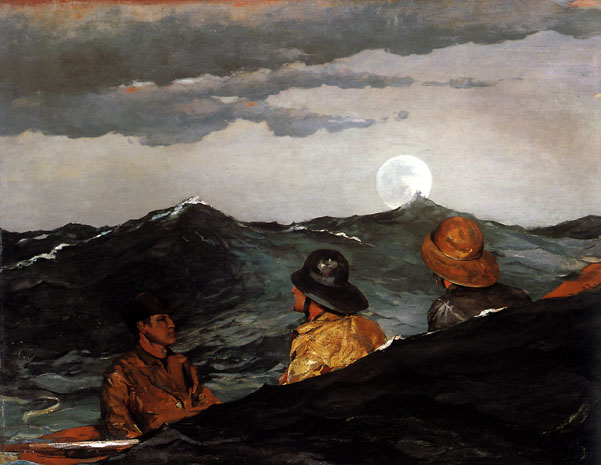As far as most Americans are concerned, Winslow Homer (1836-1910) is America’s most celebrated artist. As the US Ambassador in London, Robert Holmes Tuttle, recently expressed it, “In the States, Homer’s a national treasure: he’s the Mona Lisa, he’s the Crown Jewels.” Yet it has taken almost a hundred years since the painter’s death for a significant exhibition of his work to be organised in this country. It arrives in the form of “Winslow Homer: Poet of the Sea”, a judiciously selected show at the Dulwich Picture Gallery, concentrating on the artist’s achievements as a marine painter. The reasons for this particular focus are likely to have been pragmatic as well as aesthetic.
Homer’s celebrity in his native America has contributed to his relative obscurity elsewhere. Both can, to a certain extent, be explained by the unusual circumstances of his life and his unique role as a visual chronicler of that defining American historical experience, the Civil War. Homer, who was originally from Boston, was an entirely self-taught artist. His father was a hardware importer and his mother was an amateur watercolourist, both of whom encouraged him to paint. But there was no formal art education to be had in Boston in the 1850s, so he briefly apprenticed himself to a local lithographer before heading to New York in search of work as an illustrator for magazines. He found employment with Harper’s Weekly and almost before he knew it, in 1861, he had been sent to the front to cover the Civil War as a visual journalist – working, in effect, as a news cameraman avant la lettre.
It was the Civil War paintings that Homer produced, in his own spare time, that launched him on the career of a successful fine artist. These quiet, unsensational, richly symbolic...

Winslow Homer: Poet of the Sea at The Dulwich Picture Gallery 2006
26-02-2006

